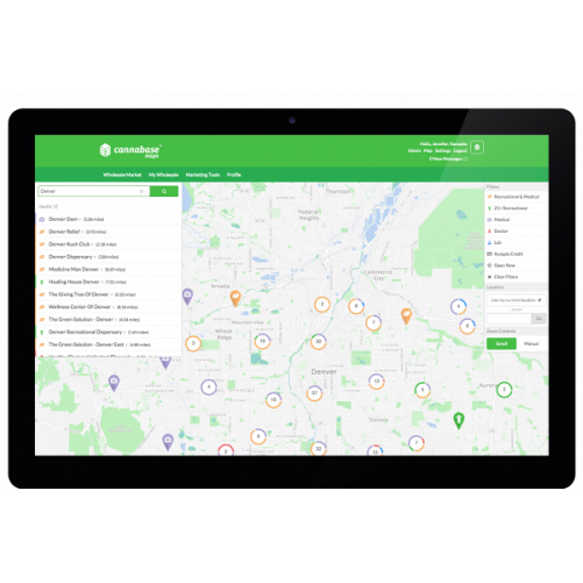Home Grown: How a Marijuana Company Keeps Their Design Low-Key
Jen and Chase Beck run a tech startup. Like most of their peers, they spend long days in front of their computers, drink too much coffee, and sacrifice most of their spare time to growing their business. Unlike most businesses, though, they have no real model to grow their company on — no tested formula. This is because up until January of last year, most of their industry was illegal.
Cannabase.io — Jen and Chase’s baby — is a web platform that includes a private network for licensed cannabis businesses. Their focus is the wholesale market, where licensed growers sell massive quantities of their product to licensed local retailers. Before last October, cannabis growers were severely limited in how much, and to who, they could sell their product as wholesale — but they knew that wouldn’t last for long.
“Wholesale was one of the last areas of the industry that we saw hadn’t really been capitalized on,” explained Jen, Cannabase’s CEO. “No one had a fully-functioning, above-ground wholesale market, cause it was too limited — you didn’t really need one.”

As Colorado adapted to legalization, they asked themselves what the future of marijuana sales would look like, once growers were allowed to sell as much of their product to retailers as they would like.
“A lot of the businesses that came in and tried to tackle wholesale — they were targeting investors, not their users. They built these bloated commodity exchanges, and then just put cannabis leaves on it.”
Instead, Cannabase approached the problem as a user would — starting with the employees that would actually be using their system to order product. The average dispensary has a turnover rate of over 80 percent, so it didn’t surprise Jen that those workers failed to learn how to use a website that operated more like NASDAQ than an online store.
“You wanna build something that feels like a mix of Craigslist and Facebook, using tools they’re familiar with,” she said. Market forecasts — while important — were secondary to the interaction and usability of the site.
“We didn’t care if it looked like Bloomburg. We didn’t need it to act like a fancy stock exchange. Our goal was to get users in, get them engaging.”
Cannabase.io is a reflection of that goal — the layout is clean, crisp, and direct. In designing the site, CTO Chase Beck made a conscious decision to lean away from the sort of design trends associated with marijuana — pot leaves, glass pipes, typography that looks like it belongs on a 311 album.

-

-

-

-

-

-

-

-

-

-

-

-

-

-

-

-

-

-

-

-

-

-

-

-

-

-

-

-

-

-

-

-

-

-

-

-

-

-

-

-








































